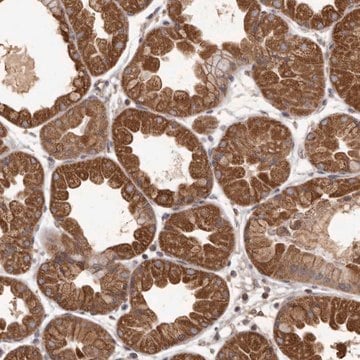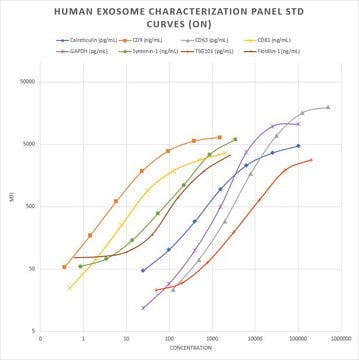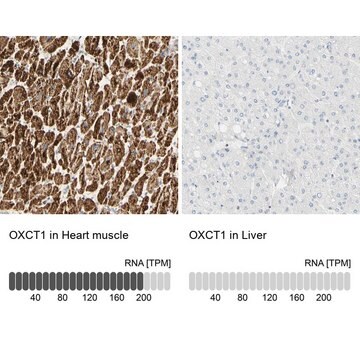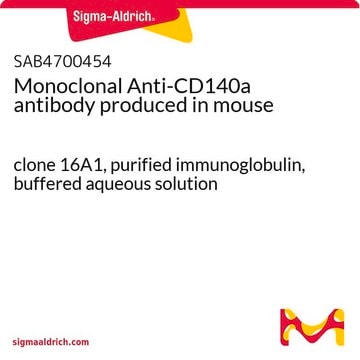推荐产品
生物源
rabbit
共軛
unconjugated
抗體表格
affinity isolated antibody
抗體產品種類
primary antibodies
無性繁殖
polyclonal
產品線
Prestige Antibodies® Powered by Atlas Antibodies
形狀
buffered aqueous glycerol solution
物種活性
mouse, human, rat
加強驗證
orthogonal RNAseq
RNAi knockdown
Learn more about Antibody Enhanced Validation
技術
immunoblotting: 0.04-0.4 μg/mL
immunohistochemistry: 1:200-1:500
免疫原序列
KKPAFLVPIVPLSFILTYQYDLGYGTLLERMKGEAEDILETEKSKLQLPRGMITFESIEKARKEQSRFFIDK
運輸包裝
wet ice
儲存溫度
−20°C
目標翻譯後修改
unmodified
基因資訊
human ... C9orf46(55848)
正在寻找类似产品? 访问 产品对比指南
一般說明
PLGRKT (plasminogen receptor, C-terminal lysine transmembrane protein) is a transmembrane receptor, which has its C-terminal at the cell surface, containing an exposed lysine residue. It is a plasminogen receptor, and binds to it through its lysine residue. PLGRKT has a molecular weight of 17,261Da, and contains 147 amino acids. It is a highly conserved protein which shows high homology in different species. It has expression levels in catecholaminergic tissues. Its trancript is also expressed in pheochromocytoma tissues, medulla of adrenal gland, hippocampus, cerebral cortex, cerebellum and sympathetic neurons. PLGRKT is also highly expressed in human peripheral blood monocytes and monocytoid cells. This gene is present on the human chromosome 9p24.1.
免疫原
Uncharacterized protein C9orf46.
應用
All Prestige Antibodies Powered by Atlas Antibodies are developed and validated by the Human Protein Atlas (HPA) project and as a result, are supported by the most extensive characterization in the industry.
The Human Protein Atlas project can be subdivided into three efforts: Human Tissue Atlas, Cancer Atlas, and Human Cell Atlas. The antibodies that have been generated in support of the Tissue and Cancer Atlas projects have been tested by immunohistochemistry against hundreds of normal and disease tissues and through the recent efforts of the Human Cell Atlas project, many have been characterized by immunofluorescence to map the human proteome not only at the tissue level but now at the subcellular level. These images and the collection of this vast data set can be viewed on the Human Protein Atlas (HPA) site by clicking on the Image Gallery link. We also provide Prestige Antibodies® protocols and other useful information.
The Human Protein Atlas project can be subdivided into three efforts: Human Tissue Atlas, Cancer Atlas, and Human Cell Atlas. The antibodies that have been generated in support of the Tissue and Cancer Atlas projects have been tested by immunohistochemistry against hundreds of normal and disease tissues and through the recent efforts of the Human Cell Atlas project, many have been characterized by immunofluorescence to map the human proteome not only at the tissue level but now at the subcellular level. These images and the collection of this vast data set can be viewed on the Human Protein Atlas (HPA) site by clicking on the Image Gallery link. We also provide Prestige Antibodies® protocols and other useful information.
生化/生理作用
PLGRKT (plasminogen receptor, C-terminal lysine transmembrane protein) is responsible for the activation of plasminogen, dependent on tissue plasminogen activator (t-PA). It binds to plasminogen through its C-terminal lysine, present on the cell surface, and interacts with t-PA, to activate plasminogen. It also co-localizes with urokinase-type plasminogen activator (uPA) receptor (uPAR), in human monocytes. PLGRKT is involved in migration, invasion, and recruitment of monocytes/macrophages in the inflammatory response, through uPA-dependent plasminogen activation. It is expressed in neuronal and neuroendocrine tissues, and might be implicated in the processes connecting plasminogen activation and catecholamine release.
特點和優勢
Prestige Antibodies® are highly characterized and extensively validated antibodies with the added benefit of all available characterization data for each target being accessible via the Human Protein Atlas portal linked just below the product name at the top of this page. The uniqueness and low cross-reactivity of the Prestige Antibodies® to other proteins are due to a thorough selection of antigen regions, affinity purification, and stringent selection. Prestige antigen controls are available for every corresponding Prestige Antibody and can be found in the linkage section.
Every Prestige Antibody is tested in the following ways:
Every Prestige Antibody is tested in the following ways:
- IHC tissue array of 44 normal human tissues and 20 of the most common cancer type tissues.
- Protein array of 364 human recombinant protein fragments.
聯結
Corresponding Antigen APREST71769
外觀
Solution in phosphate-buffered saline, pH 7.2, containing 40% glycerol and 0.02% sodium azide
法律資訊
Prestige Antibodies is a registered trademark of Merck KGaA, Darmstadt, Germany
免責聲明
Unless otherwise stated in our catalog or other company documentation accompanying the product(s), our products are intended for research use only and are not to be used for any other purpose, which includes but is not limited to, unauthorized commercial uses, in vitro diagnostic uses, ex vivo or in vivo therapeutic uses or any type of consumption or application to humans or animals.
Not finding the right product?
Try our 产品选型工具.
儲存類別代碼
10 - Combustible liquids
水污染物質分類(WGK)
WGK 1
閃點(°F)
Not applicable
閃點(°C)
Not applicable
個人防護裝備
Eyeshields, Gloves, multi-purpose combination respirator cartridge (US)
Nicholas M Andronicos et al.
Blood, 115(7), 1319-1330 (2009-11-10)
Activation of plasminogen, the zymogen of the primary thrombolytic enzyme, plasmin, is markedly promoted when plasminogen is bound to cell surfaces, arming cells with the broad spectrum proteolytic activity of plasmin. In addition to its role in thrombolysis, cell surface
Hongdong Bai et al.
The Journal of biological chemistry, 286(38), 33125-33133 (2011-07-29)
Neurotransmitter release by catecholaminergic cells is negatively regulated by prohormone cleavage products formed from plasmin-mediated proteolysis. Here, we investigated the expression and subcellular localization of Plg-R(KT), a novel plasminogen receptor, and its role in catecholaminergic cell plasminogen activation and regulation
Shahrzad Lighvani et al.
Blood, 118(20), 5622-5630 (2011-09-24)
Localization of plasmin on macrophages and activation of pro-MMP-9 play key roles in macrophage recruitment in the inflammatory response. These functions are promoted by plasminogen receptors exposing C-terminal basic residues on the macrophage surface. Recently, we identified a novel transmembrane
我们的科学家团队拥有各种研究领域经验,包括生命科学、材料科学、化学合成、色谱、分析及许多其他领域.
联系技术服务部门








